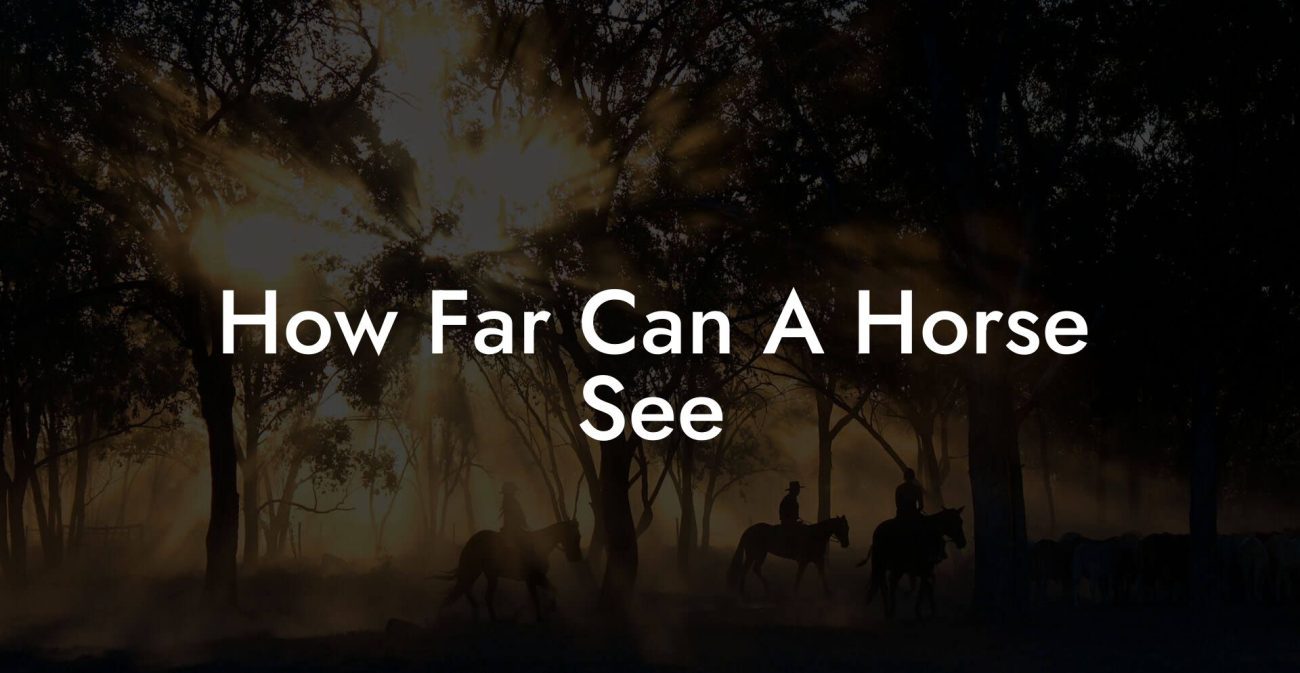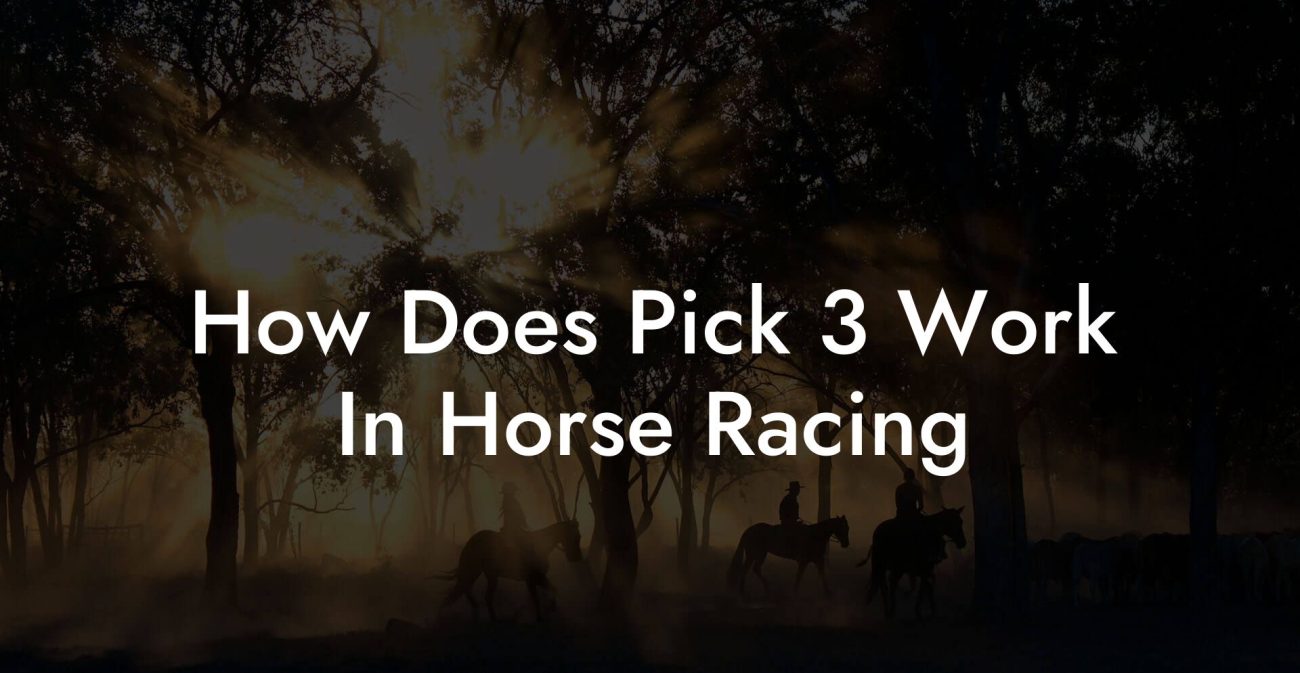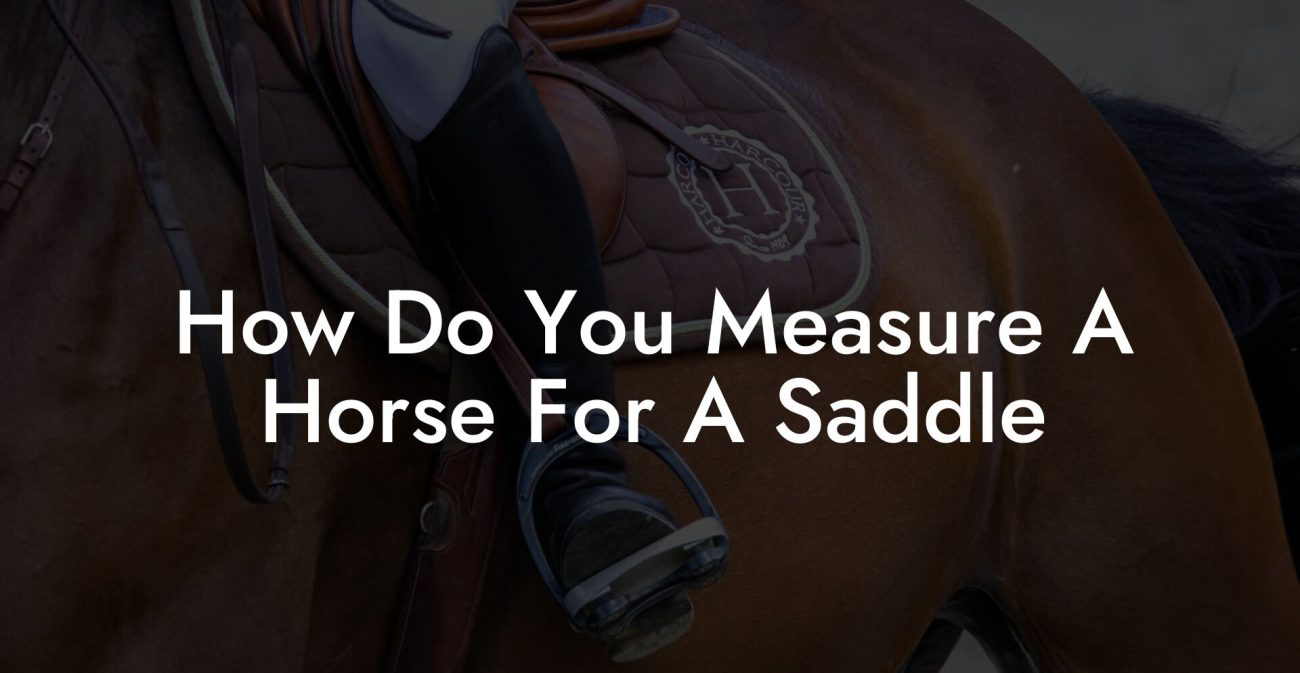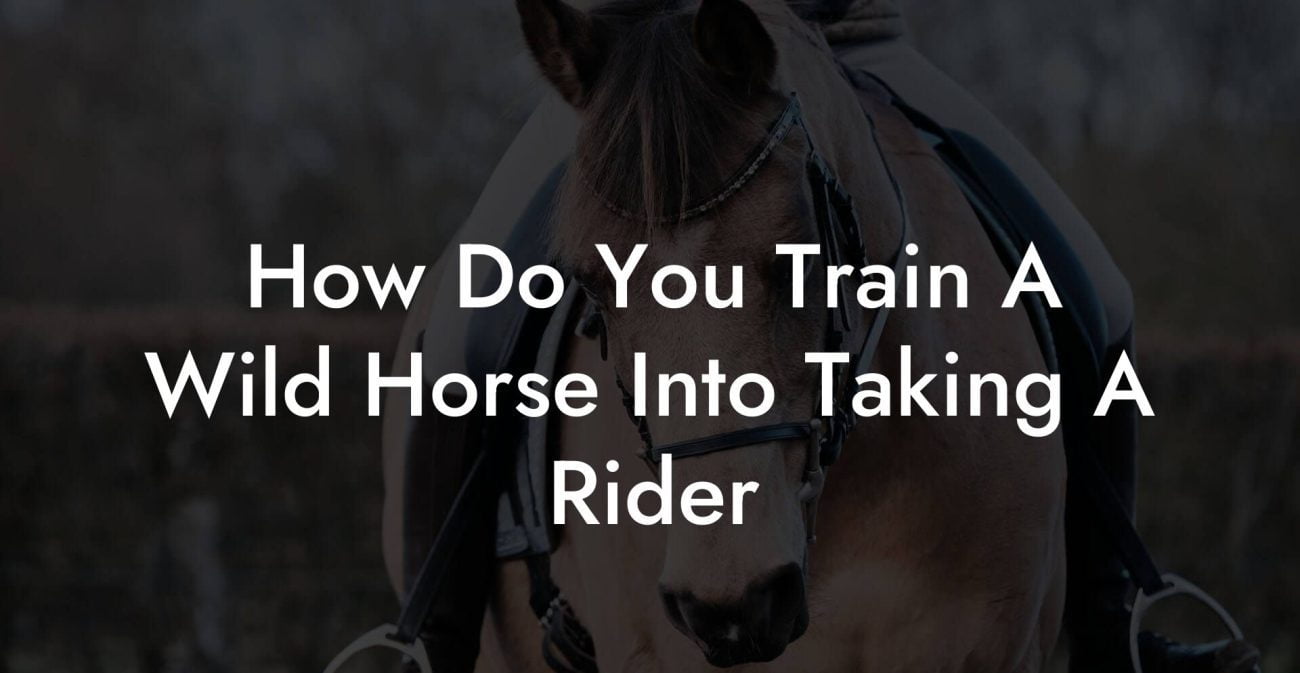Amid the bustling energy of Gen-Z creativity and millennial know-how, caring for your equine buddy can feel like stepping into a vibrant saga, a journey as epic as the novel “Pale Horse Pale Rider.” But instead of battling pandemics or navigating the twists of history, you’re forging a path in the realm of horse care, where every brushstroke of grooming, every nutritious meal, and every gallop under the open skies fuels an unbreakable bond with your majestic companion.
Quick Links to Useful Sections
- Horse Care 101: Embracing the Spirit of "Pale Horse Pale Rider"
- Understanding Your Equine Companion: More Than Just a Horse
- Nutritional Essentials: Fueling the Journey
- Grooming and Health: Crafting the Perfect Equine Spa Day
- Daily Brushing Rituals
- Strategic Mane and Tail Care
- Hoof Care: The Foundation of Mobility
- Exercise and training: Galloping Into the Future
- Structured Workouts
- Incorporating Technology in Training
- Fun and Innovative Drills
- Equine Behavior and Bonding: Becoming Besties With Your Horse
- Reading the Signs
- Positive Reinforcement Techniques
- Shared Adventures
- Health and Wellness: Preventative Care and Early Detection
- Routine Veterinary Visits
- Dental Care
- Vaccinations and Parasite Management
- Holistic and Integrative Equine Care: The New Frontier
- Equine Massage Therapy
- Acupuncture and Energy Healing
- Herbal Supplements and Equine Nutrition
- Modern Technology in Equine Management: Smart Stables and Beyond
- Smart Stables
- Wearable Tech for Horses
- Mobile Apps and Software Solutions
- Addressing Common Challenges in Horse Care
- Seasonal Changes and Environmental Adjustments
- Behavioral Issues and Training Setbacks
- Injury Prevention and Management
- Resources and Community Support: Your Next Steps
- Online Communities and Forums
- Workshops and Webinars
- Local Equine Centers and Equestrian Clubs
- Innovative Trends in Equine Lifestyle: A Blend of Tradition and Modernity
- Eco-Friendly Stable Management
- Holistic Wellness Retreats
- Social Media and Virtual Showcases
- Case Studies: Real-Life Equine Transformations
- Case Study 1: From Shabby Stables to Smart Living
- Case Study 2: Harnessing Holistic Health in a Digital Era
- Case Study 3: Bridging the Gap Between Tradition and Technology
- Designing Your Personalized Equine Care Plan
- Step 1: Holistic Assessment
- Step 2: Define Your Goals
- Step 3: Integrate Advanced Practices
- Step 4: Establish a Routine
- Step 5: Monitor, Reflect, and Evolve
- Equine Safety and First Aid: Be Prepared, Stay Empowered
- First Aid Kits and Emergency Supplies
- Knowledge and Training
- Equine Fitness Challenges: A New Playground for Digital Natives
- #GallopGoals
- Virtual Trail Adventures
- Equine Health Myths and Facts: Debunking Legends in Horse Care
- Myth 1: "Horses Only Need Basic Care"
- Myth 2: "All Horses Are the Same"
- Myth 3: "Grooming is Just About Looks"
- Equine Care Success Stories: Celebrating Triumphs
- The Resilient Stallion
- The Gentle Mare’s Rebirth
- Equine Training for the Modern Enthusiast
- Precision and Adaptability
- Fun and Engagement
- Equine Communication: Speaking a Universal Language
- Observational Learning
- Consistency in Cues
- Equine Environmental Enrichment: Creating a Blissful Stable Life
- Interactive Pastures
- Innovative Stable Design
- Social Enrichment
- Equine Insurance and Financial Planning: Future-Proofing Your Equine Investment
- Insurance Options
- Budgeting for Technology
- Equine FAQs: Your Burning Questions Answered
- Your Ride to a Bold, Integrated Equine Future
Horse Care 101: Embracing the Spirit of "Pale Horse Pale Rider"
The title “Pale Horse Pale Rider” might evoke images of mysterious, windswept landscapes and epic journeys, but here it transforms into a manifesto for a fresh, integrative approach to modern horse care. Just as modern literature has reinvented classic themes, Gen-Z and millennial horse enthusiasts are rewriting the playbook on equine management with a blend of high-tech innovation and timeless, holistic traditions.
So what does it take to care for a horse in today’s fast-paced, hashtag-driven world? It starts with understanding that your horse is more than just a set of hooves and mane, they’re your partner in adventure, your confidant in moments of solitude, and sometimes, your spirited muse. With the right care, the relationship transcends routine maintenance, evolving into an art form that harmonizes nutrition, exercise, grooming, and emotional well-being.
In this comprehensive guide, we’ll explore everything from daily feeding rituals to innovative equine technology, all while keeping the tone refreshingly humorous and down-to-earth. Whether you’re new to horse care or a seasoned rider looking to up your game, get ready to dive into a world where every detail matters.
Understanding Your Equine Companion: More Than Just a Horse
Horses are creatures of immense beauty and complexity. They embody freedom and power while also requiring sensitive, attentive care. Recognizing the unique personality of your horse is the first step toward establishing a healthy, enduring bond.
Every equine has a distinct temperament, from the spirited thoroughbred that charges ahead with enthusiasm to the gentle, wise mare who exudes calm energy. As you settle into the rhythm of horse care, it becomes crucial to pay attention to the subtle cues your horse shares, whether through a flick of the tail, a soft nicker in the early morning, or the way they lean into a friendly pat.
Modern techniques now emphasize observing body language and non-verbal communication. Social media trends like #EquineVibes and #HorseWhisperer are proof that a new generation is dedicated not just to the physical upkeep of their horses but also to nurturing their emotional and psychological well-being.
Nutritional Essentials: Fueling the Journey
Just like us, horses thrive on a balanced, nutrient-rich diet. The cornerstone of excellent horse care is feeding strategies that combine traditional practices with innovative nutritional science. Whether you’re a pasture-loving horse or one who thrives on a meticulously measured feed regimen, understanding the dietary needs of your equine is critical.
Key concepts in equine nutrition include:
- Forage First: High-quality hay and pasture are the foundation of your horse’s diet. They provide essential fiber and nutrients that support digestive health. With trends leaning towards organic and sustainable agriculture, many modern horse owners are seeking locally sourced, eco-friendly forages.
- Grains and Supplements: Depending on the energy requirements of your horse, whether they’re a high-performance athlete or a leisurely companion, grains and specialized supplements can offer a tailored boost. Omega-3 fatty acids, for example, are trending in equine circles for their anti-inflammatory benefits.
- Hydration is Key: Don’t underestimate the importance of water. Clean, fresh water is vital for digestion, muscle function, and overall health. Cutting-edge water dispensers and smart hydration systems are now making their way into stables, ensuring every sip is as refreshing as a cool breeze on a summer day.
As you plan your horse’s meals, think of it as curating a gourmet menu that not only satisfies their hunger but also supports their performance, energy, and health.
Grooming and Health: Crafting the Perfect Equine Spa Day
Grooming is where practicality meets pleasure. It’s one of the most rewarding aspects of horse care and offers a unique opportunity to build trust with your horse. Regular grooming sessions help keep the coat shiny, the skin healthy, and the overall spirit uplifted.
Modern grooming techniques, powered by a mix of tradition and technology, include:
Daily Brushing Rituals
A daily brushing routine can do wonders for your horse’s coat and demeanor. Use eco-friendly brushes that are designed for different parts of your horse’s body, softer brushes for the face and firmer ones for the mane and tail. With a gentle approach, grooming becomes a relaxing ritual that doubles as a bonding session.
Strategic Mane and Tail Care
Maintaining a flowing mane and tail is both an art and a science. Shampoo formulations, conditioners, and detangling sprays have advanced significantly over the years. Find products that suit your horse’s coat type and ensure that every streak of hair is carefully managed. A sleek mane can elevate your horse’s style and confidence, making them the envy of every stable.
Hoof Care: The Foundation of Mobility
Hoof care is arguably one of the most critical components of equine health. Regular cleaning, trimming, and the occasional visit by a farrier ensure your horse can trot, canter, and gallop without discomfort. Today’s farriers are integrating digital measurements and modern materials to craft custom horseshoes designed to mitigate common hoof injuries.
In essence, grooming is a multifaceted practice that maintains health while contributing to the aesthetic appeal of your horse. It’s your equine’s personal spa day, every day.
Exercise and training: Galloping Into the Future
Exercise isn’t just about fitness, it’s essential for maintaining a horse’s mental and emotional balance. The dynamic world of equine exercise now combines traditional training methods with the latest in tech-driven insights to create personalized exercise regimens.
Here’s how you can design an effective routine:
Structured Workouts
While some horses are content with a relaxing trot around the pasture, others thrive on high-intensity activities like dressage, jumping, or trail riding. Develop a schedule that incorporates a mix of activities, balancing high-energy workouts with days of active recovery. Consider using sports tracking apps tailored to equine performance to monitor your horse’s progress.
Incorporating Technology in Training
The modern era has gifted us a bevy of gadgets and wearables specifically designed for horses. GPS trackers, heart rate monitors, and motion sensors can provide real-time insights, allowing you to adjust workouts on the fly. These smart devices not only help improve performance but also assist in preventing injuries.
Fun and Innovative Drills
Remember, horses respond best to training when it’s infused with creativity and fun. Incorporate obstacle courses, agility drills, and even puzzle-solving activities to challenge your horse mentally as well as physically. The more engaging the process, the stronger the bond between you and your four-legged friend.
The goal is to create a balanced program that boosts strength, stamina, and confidence, ensuring your horse is always ready for the next adventure.
Equine Behavior and Bonding: Becoming Besties With Your Horse
Understanding equine behavior is the secret sauce to forging a long-lasting relationship with your horse. These graceful creatures communicate in nuanced ways, often through subtle body language and energy shifts. By developing a keen awareness of their behavior, you can foster a deep, almost telepathic connection.
Consider these tips:
Reading the Signs
Watch for cues such as ear position, tail movement, and overall posture. A relaxed horse will exhibit soft eyes and a gentle stance, while signs of anxiety might include pinned ears and restless movements. Learning this language takes time, but it’s an investment that pays off in loyalty and mutual trust.
Positive Reinforcement Techniques
Much like training a puppy, positive reinforcement is key. Rewarding desired behaviors with treats, extra grooming time, or simply kind words can significantly enhance your horse’s responsiveness. It’s all about creating a positive cycle of feedback that nurtures both confidence and cooperation.
Shared Adventures
Whether it’s a sunrise trail ride or a playful romp in a soft paddock, shared experiences greatly reinforce the bond. Taking time to simply be together without any agenda can help alleviate stress and foster companionship. In today’s fast-paced world, carving out these moments of connection is more important than ever.
Ultimately, equine bonding is about empathizing with your horse on an emotional level, creating a trust-based relationship that enriches both of your lives.
Health and Wellness: Preventative Care and Early Detection
Just like us, horses benefit immensely from preventative health measures. Regular check-ups, vaccinations, dental care, and deworming are all part of a comprehensive equine wellness plan. Modern horse care now emphasizes early detection and proactive measures to keep your horse in tip-top shape.
Some valuable practices include:
Routine Veterinary Visits
Develop a regular schedule for veterinary visits, you want to catch potential issues before they escalate. Routine exams and blood tests are not just a formality, but a crucial investment in your horse’s longevity and happiness.
Dental Care
Dental problems in horses can lead to significant complications in digestion and overall comfort. Professional dental check-ups, typically performed annually or bi-annually, help ensure that any issues are promptly addressed.
Vaccinations and Parasite Management
Keeping your horse’s immune system robust requires up-to-date vaccinations against common equine diseases. Additionally, a well-planned deworming schedule is vital for preventing parasite infestations that can compromise health.
Incorporating these measures into your routine not only extends your horse’s lifespan but also guarantees that they remain vigorous and ready for every escapade.
Holistic and Integrative Equine Care: The New Frontier
The modern landscape of horse care now embraces holistic, integrative approaches that merge conventional veterinary practices with alternative therapies. Much like the spirit encapsulated in “Pale Horse Pale Rider,” this trend embodies a journey toward overall balance and renewal.
Some emerging practices include:
Equine Massage Therapy
Massage therapy isn’t reserved solely for humans. Equine massage has gained traction as a method to relax sore muscles, improve circulation, and reduce stress. A skilled massage therapist can help alleviate tension in hard-to-reach areas, paving the way for smoother movement and overall well-being.
Acupuncture and Energy Healing
Borrowed from ancient Eastern traditions, acupuncture and other energy healing modalities are being introduced into equine care. These practices are believed to balance energy flow, reduce inflammation, and encourage healing, a holistic complement to traditional medical treatments.
Herbal Supplements and Equine Nutrition
As part of a holistic regimen, many horse owners are integrating herbal supplements and nutraceuticals into their feeding routine. These natural aids, notably turmeric, ginger, and omega-rich oils, can help reduce inflammation and boost overall vitality.
The beauty of integrative equine care lies in its blend of science and tradition. By incorporating both advanced diagnostic tools and time-honored healing practices, you cultivate a care routine that nourishes your horse on every level, physical, mental, and emotional.
Modern Technology in Equine Management: Smart Stables and Beyond
Technology is transforming every facet of modern life, and horse care is no exception. Innovative gadgets and smart systems are revolutionizing how stables are managed and how equine health is monitored.
Consider these technological advances:
Smart Stables
Smart stables integrate sensors, automated feeding systems, climate control, and even security cameras to ensure your horse is safe and comfortable. Imagine receiving an alert on your phone if there’s a sudden temperature drop or if your horse’s water bowl needs a refill, the future of equine care is at your fingertips.
Wearable Tech for Horses
Wearable devices such as equine fitness trackers, heart rate monitors, and GPS trackers now ensure that every stride your horse takes is recorded. These insights not only help tailor training programs but also alert you to early signs of fatigue or distress, enabling swift intervention.
Mobile Apps and Software Solutions
A myriad of apps designed specifically for horse owners allow you to schedule veterinary appointments, track feeding routines, manage training logs, and connect with veterinarians and trainers. This digital ecosystem caters perfectly to tech-savvy millennials and Gen-Z enthusiasts who value convenience and efficiency.
Embracing these technologies streamlines daily management and empowers you to provide an elevated level of care, all while optimizing the workflow in your stable.
Addressing Common Challenges in Horse Care
Every journey has its hiccups, and horse care is no different. From weather-related challenges to behavioral quirks and unexpected health issues, being prepared is key. Recognizing potential obstacles, and having strategies to tackle them, ensures that your horse flourishes despite the occasional setbacks.
Here are some common challenges and how to overcome them:
Seasonal Changes and Environmental Adjustments
Horses are highly sensitive to weather. In winter, ensuring your horse stays warm and adequately fed becomes a priority, while summertime requires rigorous hydration and protection from the relentless sun. Adjust your stable management routines, like modifying feed intake and humidity control systems, to adapt to seasonal variations.
Behavioral Issues and Training Setbacks
Not every training session goes off without a hitch. Sometimes a horse might show stubbornness or anxiety, especially in unfamiliar environments. Incorporate patience, positive reinforcement, and sometimes a dose of humor to navigate these challenges. Remember, a well-developed bond will help you understand your horse’s quirks and address them effectively.
Injury Prevention and Management
Injuries, whether from overexertion or minor accidents, can disrupt a horse’s routine. Regular check-ups, along with smart monitoring systems, minimize the risk of unseen injuries. If an issue arises, immediate consultation with a veterinarian, coupled with integrative therapies like massage or controlled exercise, can promote swift recovery.
Facing challenges head-on with creative solutions leads to a steady, enduring path to optimal equine health.
Resources and Community Support: Your Next Steps
One of the most exciting aspects of being part of the modern horse care community is the wealth of resources and support available. Whether you’re accessing expert advice online, joining local equestrian groups, or engaging with social media communities, you’re never alone on this journey.
Explore these resources:
Online Communities and Forums
From Facebook groups to Reddit threads, digital communities are buzzing with enlightened horse enthusiasts. These spaces allow you to ask questions, share advice, exchange success stories, and even schedule meetups with fellow horse lovers. Look up hashtags like #HorseCareRevolution and #EquineEmpowerment on Instagram for daily inspiration.
Workshops and Webinars
Embrace learning opportunities through virtual workshops and webinars hosted by renowned equine experts. Topics can range from equine nutrition and holistic care practices to grooming techniques and modern equestrian technology. These interactive sessions provide both practical advice and a platform to network with peers.
Local Equine Centers and Equestrian Clubs
If you prefer in-person interactions, research local stables, equestrian centers, and clubs where you can participate in hands-on workshops and trail rides. These local hubs often offer mentoring programs for beginners and advanced training modules for the well-versed.
The more you engage with a supportive network, the richer your experience becomes, not just for you, but for your beloved equine, too.
Innovative Trends in Equine Lifestyle: A Blend of Tradition and Modernity
The lifestyle of a modern horse owner straddles the line between tradition and the digital age, merging sustainable practices with fresh, innovative trends. This evolution is reshaping the way we view and manage horse care.
Some of the trends rocking the equine world include:
Eco-Friendly Stable Management
Sustainability isn’t just a buzzword. From solar-powered stable lighting to organic bedding and eco-friendly cleaning products, green initiatives are making a mark. These eco-friendly practices not only protect the environment but also create healthier living conditions for your horse.
Holistic Wellness Retreats
Picture weekend getaways where you and your horse participate in holistic wellness retreats, complete with yoga sessions, equine massage therapy, guided trail rides, and nutrition workshops. These retreats offer a perfect blend of relaxation, self-care, and a deeper connection with your animal companion.
Social Media and Virtual Showcases
In a world dominated by visuals, social media platforms are teeming with virtual horse shows, live training sessions, and inspiring success stories. Whether you’re sharing your journey or drawing inspiration from others, platforms like Instagram, TikTok, and YouTube have become invaluable tools for modern horse enthusiasts.
Embracing these trends not only keeps you in tune with modern practices but also elevates your horse care routine into an exciting lifestyle.
Case Studies: Real-Life Equine Transformations
Nothing encapsulates the transformative power of modern horse care better than real-life journeys. These case studies highlight how innovative practices, infused with a dash of humor and a lot of heart, have revolutionized the lives of horses and their owners.
Case Study 1: From Shabby Stables to Smart Living
Emma, a tech-savvy millennial from a bustling cityscape, inherited a neglected stable on the outskirts of town. Determined to create a vibrant, smart environment for her majestic mare, Luna, she integrated solar panels, automated feeding systems, and eco-friendly cleaning routines. Within months, Luna’s health improved dramatically, and Emma’s stable became a local hotspot for innovative horse care ideas, sparking a regional trend toward sustainable equine lifestyles.
Case Study 2: Harnessing Holistic Health in a Digital Era
Jake, a Gen-Z equestrian influencer, combined his passion for social media with an interest in holistic wellness to launch a unique program. By incorporating mindfulness meditation sessions, herbal supplements, and modern equine massage therapy into his daily routine, Jake transformed the overall health of his sport horse, Blaze. His journey not only boosted Blaze’s performance in local competitions but also won him a dedicated following online, eager to adopt holistic practices in their own horse care routines.
Case Study 3: Bridging the Gap Between Tradition and Technology
Sarah, whose family has been in the horse business for generations, embraced modern technology to honor traditional care methods. With a balanced mix of time-honored practices and advanced wearable tech, she monitored her horse, Star, 24/7, ensuring optimal exercise, nutrition, and mental well-being. The data-driven insights allowed her to fine-tune routines, resulting in enhanced performance and a renewed sense of trust between horse and owner.
These stories are a testament to how blended approaches, merging tradition with modernity, can yield incredible transformations in the realm of horse care.
Designing Your Personalized Equine Care Plan
Crafting a personalized horse care plan is akin to designing a bespoke adventure, tailored precisely to the needs and personality of your equine companion. It starts with understanding the basics and gradually incorporating advanced practices that align with your lifestyle, values, and the unique quirks of your horse.
Step 1: Holistic Assessment
Begin by evaluating every aspect of your horse’s lifestyle. This includes a health check-up, a dietary review, and an assessment of their daily exercise and mental stimulation needs. Consult with veterinarians, farriers, and nutrition experts to establish a balanced baseline.
Step 2: Define Your Goals
Are you looking to boost performance? Improve overall health? Enhance grooming and appearance? Clearly delineate your objectives, whether short term or long term. These goals will guide every aspect of your care plan.
Step 3: Integrate Advanced Practices
With goals in place, blend traditional care (like daily grooming and scheduled veterinary visits) with innovative practices. Consider digital tools for tracking exercise, holistic treatments to ease chronic issues, and even community-sourced advice from online equine care forums.
Step 4: Establish a Routine
Consistency is the secret ingredient to success. Map out a daily, weekly, and seasonal routine that incorporates feeding times, exercise regimes, grooming sessions, and relaxation periods. Remember to include space for spontaneous bonding moments that reinforce the human-horse connection.
Step 5: Monitor, Reflect, and Evolve
Use journals, apps, and regular health check-ups as feedback loops. Monitor progress, note any setbacks, and adjust your plan accordingly. A dynamic plan is one that evolves as both your and your horse’s needs change over time.
Designing your personalized plan is a creative and rewarding endeavor, a testament to the deep bond you share with your horse. It’s a living document that grows, adapts, and eventually defines the rhythm of your daily life.
Equine Safety and First Aid: Be Prepared, Stay Empowered
No matter how well you plan, unexpected incidents can occur. Whether it’s a minor cut during grooming or a more serious incident during training, being prepared for emergencies is a hallmark of modern horse care.
Essential components of equine first aid include:
First Aid Kits and Emergency Supplies
Keep a well-stocked first aid kit in your stable. This kit should include bandages, antiseptics, cold packs, and emergency contact info for your veterinarian. With a few smart additions, such as digital guides or emergency apps, you’re prepared to act quickly when needed.
Knowledge and Training
Investing time in learning basic equine first aid can make a significant difference. Attend workshops, enroll in online courses, or even download infographics that outline essential steps to address common injuries. Staying educated empowers you to confidently handle unexpected challenges.
With safety as a priority, you create an environment where both you and your horse feel secure and supported.
Equine Fitness Challenges: A New Playground for Digital Natives
The rise of digital technology has introduced a new wave of equine fitness challenges that blend friendly competition with practical exercise routines. Imagine combining your love for social media challenges with your horse’s workout regimen, a fun, engaging way to keep both of you on track.
Popular digital challenges include:
#GallopGoals
Set weekly targets for distance or speed, and track your horse’s progress using wearable tech. Share your victories (and the occasional setback) on social media to inspire and engage with a community of like-minded equine enthusiasts.
Virtual Trail Adventures
Participate in online events that simulate trail rides across diverse landscapes. With VR components and interactive maps, these events offer a unique blend of physical activity and digital innovation, perfect for tech-savvy Gen-Zers and millennials.
These fitness challenges transcend the routine and infuse your horse care routine with a breath of fresh, modern air.
Equine Health Myths and Facts: Debunking Legends in Horse Care
The world of horse care is rife with myths passed down through generations. While tradition holds value, it’s important to discern fact from fiction in today’s data-driven landscape.
Here are a few common misconceptions debunked:
Myth 1: "Horses Only Need Basic Care"
Fact: Modern horse care is an intricate blend of nutrition, technology, holistic therapies, and personalized routines. Neglecting any component can compromise a horse’s health.
Myth 2: "All Horses Are the Same"
Fact: Every horse is unique, with individual needs, temperaments, and responses to care practices. Avoid one-size-fits-all methods.
Myth 3: "Grooming is Just About Looks"
Fact: Regular grooming is essential for health, aiding in circulation, skin care, and strengthening the bond between you and your horse.
Dispelling these myths empowers you to make informed decisions and fosters a culture of innovative, evidence-based equine care.
Equine Care Success Stories: Celebrating Triumphs
There’s nothing quite as inspiring as success stories from the field of horse care. From overcoming chronic health issues to elevating performance through technology and integrative practices, real-life narratives provide both motivation and practical insights.
Consider the following stories:
The Resilient Stallion
After suffering from recurring lameness, a champion stallion’s owner combined targeted physiotherapy with modern wearable tech. This dual approach allowed them to monitor every step, adjust exercise regimens in real time, and eventually witness the stallion return to the winner’s circle.
The Gentle Mare’s Rebirth
A gentle mare, once plagued by anxiety and inconsistent performance, experienced a transformation by integrating mindfulness practices, tailored nutrition, and engaging social media challenges. Her newfound confidence resonated so strongly in the local equestrian circuit that she became a role model for many new horse owners.
These stories exemplify the extraordinary transformations that arise from blending tradition, technology, and heartfelt passion in horse care.
Equine Training for the Modern Enthusiast
Let’s face it, training a horse today isn’t just about following archaic routines; it’s a dynamic, interactive experience that combines cutting-edge equipment with personal flair. Modern training methods harness data analytics, virtual feedback, and positive reinforcement, turning each session into both a learning experience and a bonding adventure.
Key areas to focus on include:
Precision and Adaptability
Smart training programs are designed around the principle of precision. By using video analysis and wearable technology, you can track each movement and adjust your training drills to enhance precision and adaptability. This leads to not only a more efficient training process but also a more harmonious connection between rider and horse.
Fun and Engagement
Training should be as entertaining as it is effective. Inject elements of fun by turning drills into games. Whether you’re using obstacle courses or interactive cues aided by smartphone apps, the key is to keep your sessions fresh, playful, and innovative.
Enlivening training routines not only reinforces positive behavior but also harnesses the energy and enthusiasm synonymous with today’s digital and creative lifestyles.
Equine Communication: Speaking a Universal Language
Behind every friendly nudge and subtle flick of the ear lies a language unbound by words, a language that speaks directly to the soul of both horse and human. Mastering equine communication is central to effective horse care.
Techniques include:
Observational Learning
Spend time simply observing your horse in its natural state. Note how it reacts to different environments, changes in routine, and your own emotional state. Over time, you’ll be able to detect even the slightest shifts in behavior, which can be pivotal for preempting issues.
Consistency in Cues
Consistency is key, use the same signals, gestures, and words. Over time, these repeated cues become a natural part of your shared lexicon, drastically enhancing communication.
An effective dialogue with your horse creates an environment where mutual respect and understanding flourish, turning every interaction into an opportunity to build trust.
Equine Environmental Enrichment: Creating a Blissful Stable Life
Beyond food, grooming, and training lies the underrated realm of environmental enrichment. Just like any living being, horses flourish in environments that stimulate their minds, promote natural behaviors, and reduce stress.
Consider these creative ideas:
Interactive Pastures
Design your pasture with varied terrains, shaded areas, and water features. Rotational grazing, where the current area is periodically changed, not only prevents overgrazing but also enriches your horse’s experience.
Innovative Stable Design
Modern stables are now equipped with features like smart ventilation, natural light optimization, and even acoustic elements that mimic nature. Such designs elevate your horse's daily experience.
Social Enrichment
Horses are naturally social creatures. Ensure they have the opportunity to interact with other horses, whether through shared turnout or organized group activities. Social enrichment fosters healthy behavior and uplifts overall well-being.
By creating an enriched environment, you ensure your horse enjoys not just a routine, but a life filled with opportunities for exploration and joy.
Equine Insurance and Financial Planning: Future-Proofing Your Equine Investment
Caring for a horse is not only an emotional journey, it also requires savvy financial planning. With the escalating costs associated with premium feed, advanced veterinary care, and innovative technology, equine insurance has become a vital resource for modern horse owners.
Consider these points:
Insurance Options
Evaluate comprehensive insurance packages that cover everything from routine veterinary care to emergency procedures and technology-enhanced services. Doing so ensures that, come what may, your horse’s health and happiness are safeguarded.
Budgeting for Technology
In the digital age, budgeting for smart devices, wearables, and infrastructure upgrades (like smart stables) is as essential as allocating funds for hay and feed. Plan ahead to integrate these innovations seamlessly.
Financial planning and insurance are the safety nets that allow you to invest wholeheartedly in your horse's well-being, ensuring that every aspect of care is as resilient as it is innovative.
Equine FAQs: Your Burning Questions Answered
Below are some frequently asked questions that dive deeper into equine care, integrating both traditional wisdom and modern practices:
1. What is the significance of the title "Pale Horse Pale Rider" in horse care?
It symbolizes the journey of transforming conventional horse care into a holistic, integrative experience, a blend of tradition and modernity, much like embarking on an epic adventure.
2. How do high-tech devices like wearables benefit my horse?
Wearables provide real-time insights into your horse’s health and performance, enabling personalized training regimens and early detection of potential issues.
3. What are the main components of a balanced equine diet?
A balanced diet includes quality forage, appropriate grains or supplements for energy, and plenty of fresh water. Tailor the mix based on your horse’s energy needs and performance goals.
4. How often should I groom my horse?
Daily grooming is ideal to maintain a pristine coat, foster bonding, and monitor overall health. Specialized routines, including mane, tail, and hoof care, should be scheduled weekly or as needed.
5. Are holistic and integrative therapies effective in equine health?
Yes, many horse owners have embraced holistic therapies, such as massage, acupuncture, and herbal supplements, as effective complements to conventional veterinary care.
6. How can I stay updated with the latest trends in horse care?
Engage with online communities, subscribe to equine care newsletters, and regularly participate in local workshops. Social media is also a vibrant platform for real-time updates and trends.
7. Can equine environmental enrichment really improve my horse’s mood?
Absolutely, an enriched environment that includes varied terrains, social interaction, and natural elements can dramatically enhance a horse’s overall happiness and behavior.
8. What should I look for when choosing equine insurance?
Look for comprehensive coverage that addresses routine care, emergency situations, and modern technology-related services. Customized policies that align with your horse’s lifestyle are ideal.
9. Is it necessary to integrate technology into traditional horse care routines?
While not mandatory, integrating technology can streamline routines, provide valuable insights, and help prevent issues before they arise, making it a worthwhile investment for the modern equine enthusiast.
Your Ride to a Bold, Integrated Equine Future
The world of horse care is evolving, melding the wisdom of the past with the innovations of tomorrow. Through an integrative, holistic approach, every aspect of your horse’s life is celebrated, nurtured, and elevated. As you embrace this bold new paradigm, remember that every grazing moment, every training session, and every shared laugh creates a legacy of love and care.
Your journey with your equine companion is a blend of adventure, science, art, and heart. With the principles laid out in this guide, from high-tech stables to enriching pastoral experiences, you have the tools to redefine what it means to care for a horse in the modern era.
Step into this vibrant chapter with confidence. Let every gallop, every tender grooming session, and every innovative twist on traditional care remind you that you’re not just maintaining a routine, you’re crafting a living, breathing masterpiece of equine companionship and well-being.
Embrace the legacy of “Pale Horse Pale Rider” in your own way, as you merge the timeless beauty of horse care with the pulsating energy of modern life. Unleash your passion, trust your instincts, and together with your horse, ride into a future that is as luminous and inspiring as the dawn.













